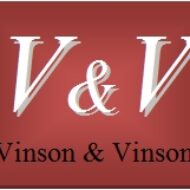June, 2022
Bob Vinson

Standard valuation approaches used by M&A practitioners in valuing non-traded companies depend very heavily upon various manipulations of various measures of the amount and rate of cash thrown off by the enterprise. Measures such as EBITDA, owners’ incomes, annual revenue, and others are essentially measures of cash flow.
However, looking at records of past business sales, we can find many cases where businesses with very similar levels of cash flow, whatever the measure, sell for significantly different prices.
What accounts for these discrepancies?
Among acquisition advisors there is the concept of “good” or “not so good” businesses. The “good” businesses tend to sell for more, sometimes much more than the “not so good”. We decided to try to enumerate some of the things that make a “good” (or premier) business.
Brands – It’s pretty well settled that a strong brand can add significant value. In fact there have been several methods devised to quantify the value that a well-known brand can add. The concept of brands incorporates enterprise and product brands.
Intellectual Properties – Patents and trade secrets (if accepted by the market) can add value. There are basically three methods for determining the incremental value: attributable increase in income, market price paid for transfer of similar IP, total cost to create.
Market Mastery – The enterprise’s relative ability to take the measure of its market.
Products – This might seem obvious but it’s not often taken into account in the valuation. If an enterprise can efficiently produce, price, and bring to market products which meet the needs of its customers and which are recognized as such; and if they can deliver and service these products more effectively than competitors, surely this adds value. In addition, if the enterprise continually develops existing and new accepted products it must be more valuable.
Customer Base – If the enterprise in question maintains a significantly lucrative base of customers which can be transferred relatively smoothly then surely it qualifies as premier in this aspect. There are some ideas about valuing a customer base which take into account loyalty, acquisition and maintenance costs, spend rate, affluence, and exclusivity.
Future Earnings – The default estimate for future earnings is that they will continue at the level experienced in the past. When it comes down to it, however, the best forecast is a gut-level guess by experienced business professionals.
Relationships – No business can survive without good and dependable relationships with other entities in its environment: customers, suppliers, regulators, competitors, etc. Those that effectively and lucratively form and manage productive relationships surely qualify as premier businesses.
Competition – A business’ ability to continually best its competition and to anticipate and meet changes in its competitive environment is much more valuable.
Processes – The organization which develops and maintains efficient and effective internal and external processes surely deserves to be considered more valuable that one that does not.
Knowledge – Learning capacity, research, innovation culture, implementation, experimentation, effective oversight.
Social Responsibility – Ecological and social action for good.
At first glance, these are some of the aspects which, for me, set a “good” business apart from a “not so good” business and will foster more interest and higher transfer prices from buyers.
